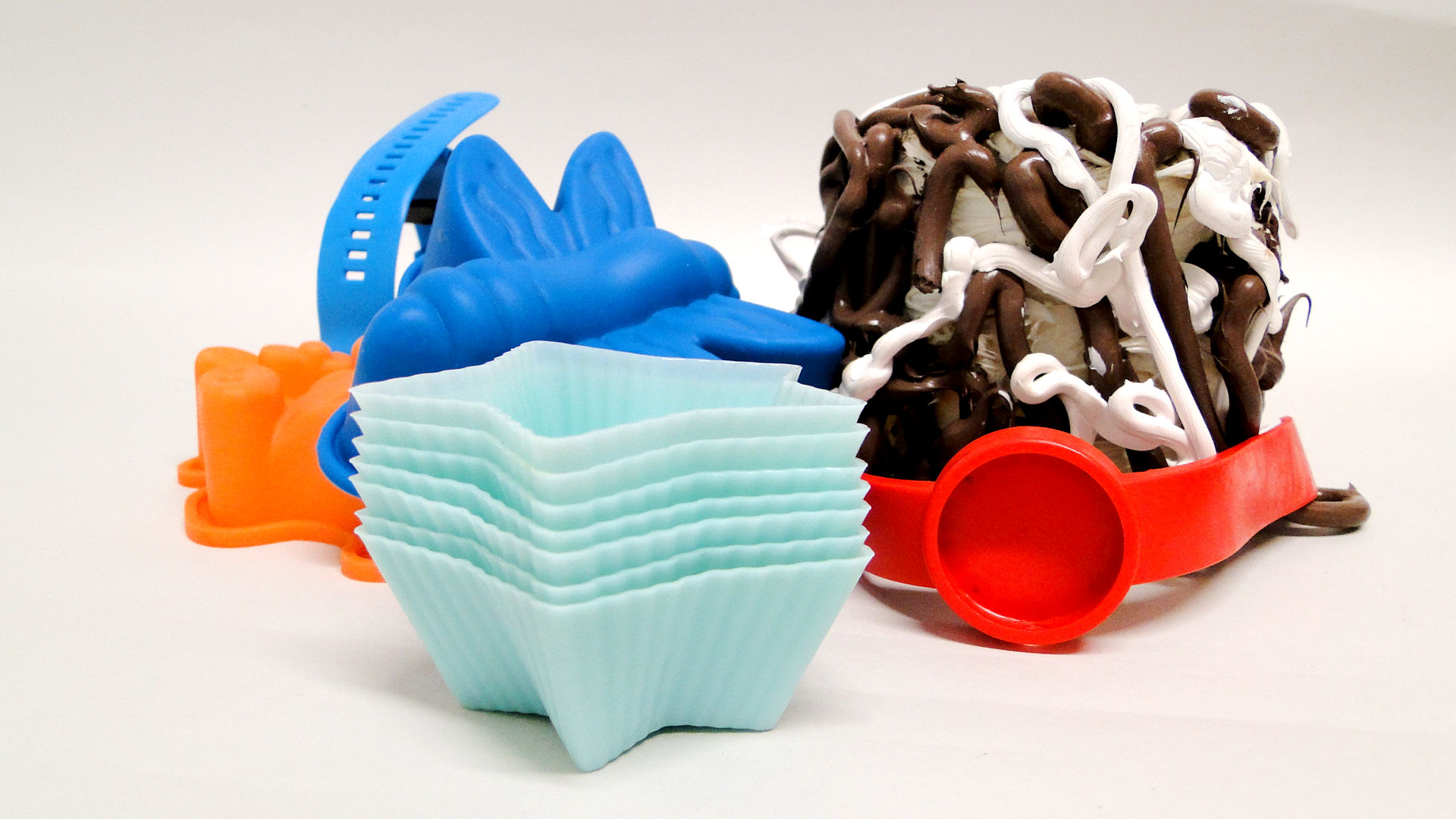Plastics
Silicone rubber (SI)
General information
Description
Silicone rubber (Si) is an elastomer that is produced by industry as well as by artists. Compared to natural rubber it has a higher resistance to oxygen, ozone and photo-oxidation and therefore more expensive. Its mechanical properties at room temperature are not as good as those of many other elastomers though. However, at extreme high and low temperatures they perform better than others. Si can be recognized by the smooth, oily feeling of its surface and rougher sides. Si can almost always be stretched to some degree.History
Silicone rubbers were patented around 1943 and large scale commercial production commenced from the end of the 1940s onwards. Since the 1970s silicone rubbers have been used by artists as mould making material. From the 1990s they have been used increasingly in artworks proper.Production, Application, Appearance
Because of its chemical resistance, hydrophobic character, nontoxicity, inertness, and good resistance to temperatures between -40 and 200°C, silicone rubber is used broadly in industry with applications as insulation material, baking and cooking utensils, and for medical purposes. Artists use one or two-part silicone rubbers that vulcanize at room temperature. They are applied in mould-making (negative moulds) and as casting material in moulds. It is used as sealant and sometimes a solution is used to paint or apply coatings. Si is available in spray cans.Properties
Material properties
ThermosetDensity: 0.97 g/cm3
Melting point: -35 to -55°C
Glass transition temperature: -123 to -127°C
Identification properties
Cell structure (foam): not applicableSmell: no characteristic smell
Touch: oily / smooth when rubbed over
Sound: no characteristic sound
UV-radiation (when clear): not applicable
Polarizing filters (when clear): not applicable
Degradation
Process
Soiling (electrostatic).Details
Si is not considered a problem plastic.Symptoms
Changes to the surface due to migration of silicon oil (surface becomes tacky), soiling by dust particles, absorption of smells and colourants. Stress or incorrect handling can cause fractures. As a result of oil migration mechanical properties may decrease.Susceptibility
UV-radiation: LowLight: Low
Oxygen/Ozone: Low
Temp: Low
RH: Medium (fluctuations)
Si can absorb smells and colourants.
Preventive conservation
Recommendations
UV-RADIATION: avoid extremesLIGHT: 1 slight change in approx. 300 Mlx.h Avoid high light dose
OXYGEN / OZONE: ambient conditions
TEMP: common indoor conditions 10-30°C
RH: common indoor conditions 30-70% RH fluctuations: setpoint ±5%"



